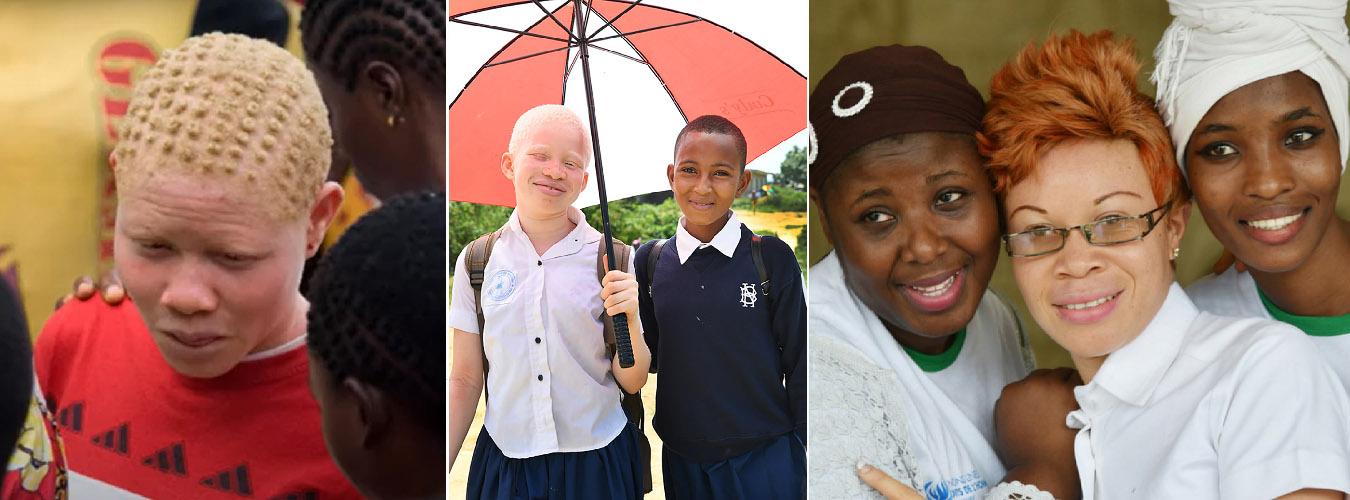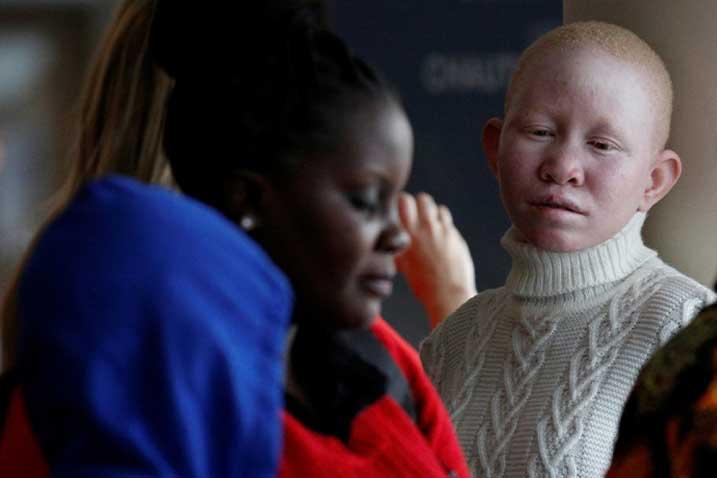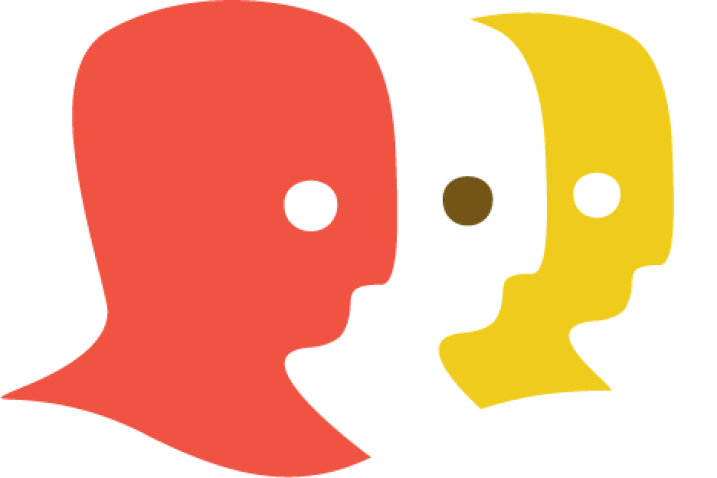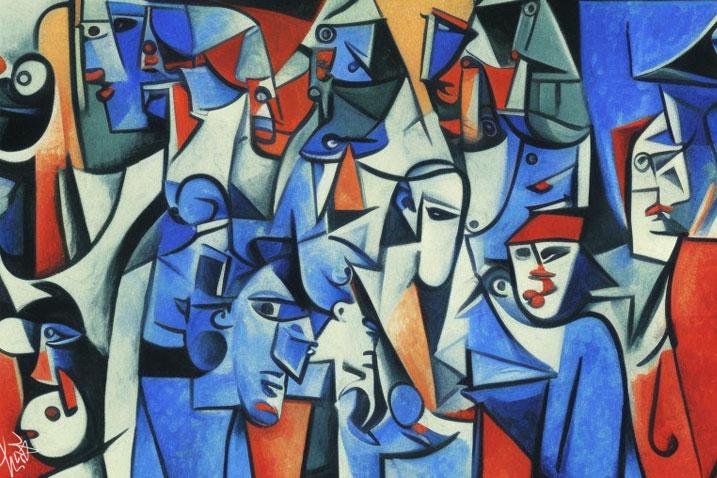Demanding our rights: Protect our skin, Preserve our lives
The 2025 theme highlights the urgent need to prevent skin cancer in persons with albinism through awareness, screenings, and sunscreen access.
The risk of skin cancer is extremely high for persons with albinism, and the lack of access to sunscreen, protective gear, as well as skin cancer screening and treatment can lead to foreseeable, yet preventable deaths. Skin cancer is the primary cause of death for persons with albinism in the Southern African region, rendering sunscreen an essential medicine, not a cosmetic product.
The majority of national action plans on albinism adopted by governments include measures to ensure access to sunscreen, protective clothing and regular dermatological check-ups and skin cancer treatments.
Several countries have initiatives providing free or subsidized sunscreen and sun protective clothing, access to dermatological services and skin cancer screening, detection and treatment and awareness campaigns to educate persons with albinism and their families about the importance of sun protection. Studies published on the impact of such interventions have shown that these interventions, where implemented, have significantly improved the health outcomes of persons with albinism.
#iaad2025 #sunscreenisadrug #albinism

10th anniversary of the mandate
The year 2025 marks the tenth anniversary of the establishment of the mandate on the enjoyment of human rights by persons with albinism. In commemoration of this milestone, in her report the current mandate holder, Muluka-Anne Miti-Drummond, provides an overview of progress made in the implementation of rights of persons with albinism worldwide over the last decade. The Independent Expert also outlines persisting challenges and makes recommendations for the continued advancement of the rights of persons with albinism.
What is albinism?
Albinism is a rare, non-contagious, genetically inherited difference present at birth. In almost all types of albinism, both parents must carry the gene for it to be passed on, even if they do not have albinism themselves. The condition is found in both sexes regardless of ethnicity and in all countries of the world. Albinism results in a lack of pigmentation (melanin) in the hair, skin and eyes, causing vulnerability to the sun and bright light. As a result, almost all people with albinism are visually impaired and are prone to developing skin cancer. There is no cure for the absence of melanin that is central to albinism.
While numbers vary, it is estimated that in North America and Europe 1 in every 17,000 to 20,000 people have some form of albinism. The condition is much more prevalent in sub-Saharan Africa, with estimates of 1 in 1,400 people being affected in Tanzania and prevalence as high as 1 in 1,000 reported for select populations in Zimbabwe and for other specific ethnic groups in Southern Africa.
Health challenges of people living with albinism
The lack of melanin means persons with albinism are highly vulnerable to developing skin cancer. In some countries, a majority of persons with albinism die from skin cancer between 30 and 40 years of age. Skin cancer is highly preventable when persons with albinism enjoy their right to health. This includes access to regular health checks, sunscreen, sunglasses and sun-protective clothing. In a significant number of countries, these life-saving means are unavailable or inaccessible to them. Consequently, in the realm of development measures, persons with albinism have been and are among those “left furthest behind.” Therefore, they ought to be targeted for human rights interventions in the manner envisioned by the Sustainable Development Goals.
Due to a lack of melanin in the skin and eyes, persons with albinism often have permanent visual impairment. They also face discrimination due to their skin colour; as such, they are often subject to multiple and intersecting discrimination on the grounds of both disability and colour.

Did you know?
- Albinism is a genetic condition inherited from both parents that occurs worldwide, regardless of ethnicity or gender.
- The common lack of melanin pigment in the hair, skin and eyes of people with albinism causes vulnerability to sun exposure, which can lead to skin cancer and severe visual impairment.
- As many as 1 in 5,000 people in Sub-Saharan Africa and 1 in 20,000 people in Europe and North America have albinism.
- In some countries people with albinism suffer discrimination, poverty, stigma, violence and even killings.
- In some countries, women who give birth to children with albinism are repudiated by their husbands, and their children abandoned or the victims of infanticide.
- The movie industry has seldom portrayed people with albinism accurately, preferring to depict them as villains, demons or freaks of nature.
- Violence against people with albinism is largely met by social silence and indifference, and is seldom followed by investigations or the prosecution of perpetrators.
source: OHCHR
On #WorldHealthDay, we stand with persons with albinism to prevent skin cancer. This year's International Albinism Awareness Day theme, "Demanding our rights: Protect our skin, Preserve our lives," reminds us of the importance of regularly using sunscreen... pic.twitter.com/F9GMtfR3Kv
— UN Independent Expert on Albinism (@UnAlbinism) April 7, 2025




